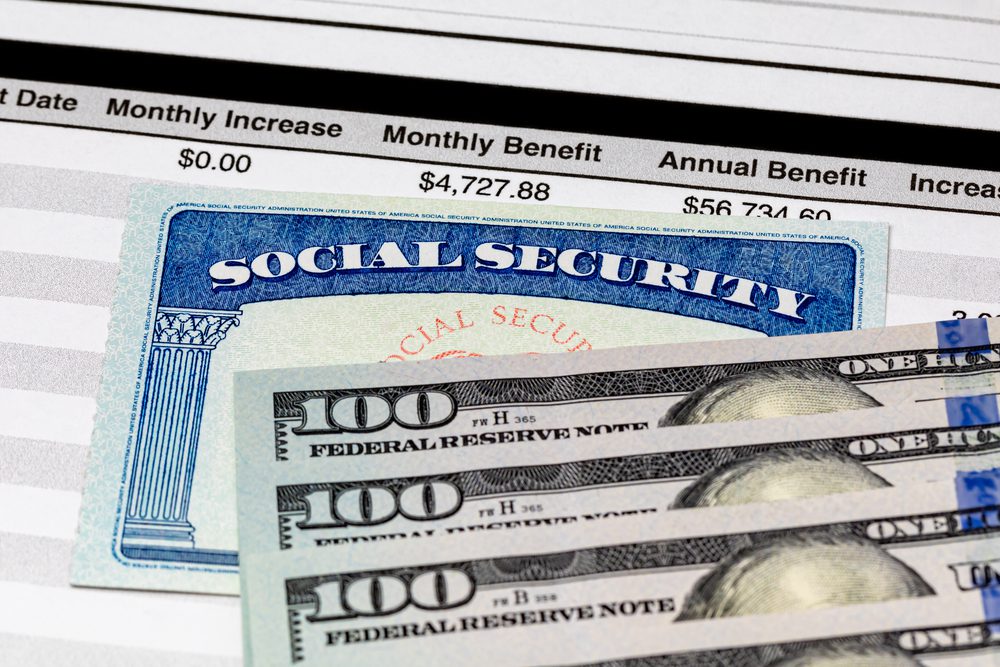Are you worried about Social Security taxes? Here’s how you can lower them efficiently!
The wide majority of workers pay for Social Security throughout their entire careers. Also, many people pay all their taxes on part of their Social Security payments in retirement.
Retirees who don’t earn a lot of money or whose only source of income is Social Security won’t have to pay income tax on their Social Security benefits. For retired workers, the average Social Security payment was known to be $1,547 two years ago, or $17,564 for the year, which is much lower than the taxable threshold of $25,000 for one person. Even so, 40% of Social Security beneficiaries are obliged to pay federal income tax as part of their benefit, as the Social Security Administration stated.
So the income cutoffs for all Social Security taxes aren’t adjusted for inflation every single year, and that’s why more retirees are forced to pay tax on their Social Security payments as time goes by. If you want to know how to reduce or even avoid taxes on your Social Security benefits, here’s what you need to know: stay below any taxable thresholds, make sure you manage other retirement income sources, you could even consider taking IRA withdrawals before you sign up for a Social Security account, save more in a Roth IRA, factor in some of the taxes implied by the state you live in, set up your Social Security tax withholding.
There are many things you need to take into consideration when it comes to whether your Social Security benefit will ultimately be taxed in retirement or not. That’s why it’s good for you to know about these strategies that we’re presenting, which are meant to minimize taxes on the majority of Social Security payments.

Stay below the taxable thresholds
Social Security benefits might be taxable if the sum of the adjusted gross income, nontaxable interest, or half of the Social Security benefit is over $25,000 for an individual and $32,000 for a married couple.
If any of these income sources are somewhere between $25,000 and $34,000 (or $32,000 and $44,000 for couples), then income tax will apply to half of your Social Security benefit. Seniors who have incomes over $34,000 (and $44,000 for couples) have to pay income tax on no less than 85% of their Social Security benefit.
Even so, you won’t have to pay tax on your entire Social Security benefit, no matter the income. “The wide majority of retirees are shocked to hear that they have to pay as much as 85% of their Social Security benefits” as Dana Anspach, certified financial planner and the CEO of Sensible Money in Scottsdale, Arizona, explained. “However, good news: no matter what, 15% of your Social Security benefits are completely tax-free.”
Focus on other retirement income sources, too
Retirees who have multiple sources of income besides Social Security are obliged to pay tax on part of their Social Security benefit. Whether we’re talking about pension payments, dividends, interests from any of your savings or investments, earnings from a part-time collaboration, or withdrawals from traditional 401(k)s and IRAs, they are all sources of retirement income that might contribute to taxable Social Security payments.
Take IRA withdrawals before you sign up for Social Security
You might have some control over the way you withdraw your retirement account in your 60s, mainly because you could take penalty-free distributions after you reach 59 and a half (in some cases, even 55 years old), but you won’t be required to take the minimum amount of withdrawals until you reach 72 years old.
You could even reduce your Social Security income tax bill, as long as you withdraw money from the traditional 401(k) or even IRA in those years before signing up for Social Security.
While some retirees prefer taking a bigger retirement account distribution the year before signing up for Social Security, others take their IRA distributions for many years, to delay claiming their Social Security and even qualifying for a bigger Social Security payment. After reaching 70 years and a half, you’ll be able to avoid paying income tax on your IRA required minimum distribution, as long as you donate it to any qualifying charity.
“RMDs might get fully or partly eliminated from tax returns by use of qualified charitable distributions.” as Jim Blankenship, certified financial planner and the founder of Blankenship Financial Planning in New Berlin, Illinois, explained. When you donate a certain distribution to charity, it doesn’t count as income and also doesn’t contribute to the taxation of your Social Security payments.
You’re not entirely sure how the Social Security tax works? Don’t worry, because this amazing book, Social Security: Simple and Smart, will come to your rescue! Plus, it’s an updated version for 2023.
Save in a Roth IRA
Distributions from Roth 401(k)s and Roth IRAs after 59 years and a half from a particular account that is a minimum of five years old aren’t taxable, and they also don’t contribute to the taxation of the well-known Social Security benefits. Saving for your golden years in the after-tax Roth account will set you up for tax-free withdrawals in retirement, but will also allow you to minimize taxes on all of your Social Security payments.
So the money that comes out of your Roth IRA account won’t count in the formula that establishes exactly how much of the Social Security is subject to taxation. So by the time you’ll initiate your Social Security, you’ll have more money in Roth IRAs and much less in tax-deferred accounts.
Also, there will be more flexibility if you decide to withdraw money from any account. With a bit of planning, you could even draw money out in such a manner, that you will avoid any tax liability throughout all of your retirement years.
Consider state taxes, too
The state you live in has a lot to say about this, too, as most states won’t tax Social Security income. Even so, 13 states still tax Social Security income, oftentimes with a couple of exceptions for low-income retirees, as data from information services company Wolters Kluwer showed.
The states that usually tax Social Security income are Colorado, Connecticut, Kansas, Minnesota, Missouri, Montana, Nebraska, and New Mexico, but also North Dakota, Rhode Island, Utah, Vermont, and West Virginia.
Set up your Social Security tax withholding
Those who owe a lot of money on their Social Security payments have two options: to make quarterly estimated tax payments to the IRS or have their federal taxes taken from monthly payments.
You could have 7%, 10%, 12%, or even 22% of your entire monthly benefit taken for taxes, but you can’t select a completely different percentage or a flat dollar amount. Setting up tax withholding is usually way more convenient than having to pay a tax bill every quarter.
Stay away from municipal bonds
Municipal bond interest, which technically isn’t even subject to income taxes, is also included in the formula that establishes whether you’ll pay taxes on your Social Security benefits. So if you avoid munis, it might lower your combined income, and even help you avoid paying taxes on any of your benefits.
How do you feel about any of the things you’ve just read? Do you think there’s something that might help you in the future? If you have other related subjects that might interest you, don’t be afraid to write them down in the comments section! If you enjoyed reading this piece, you could also try: 7 Downsides of Social Security People Aren’t Talking About.



















